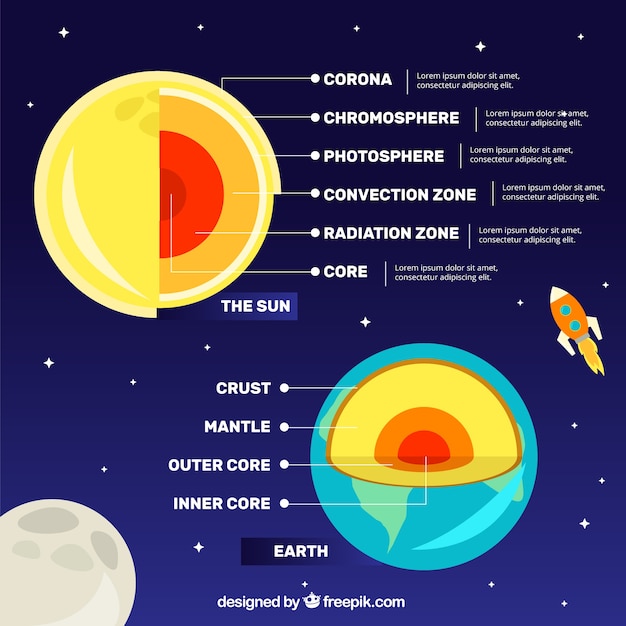Fascinating Facts about the Asteroid Belt

The asteroid belt is located between the orbits of Mars and Jupiter.
It is estimated that the asteroid belt contains over a million asteroids.
The largest asteroid in the belt is Ceres, with a diameter of about 590 miles.
The total mass of all the asteroids in the belt is less than that of Earth’s moon.
Contrary to popular belief, the asteroids in the belt are not densely packed and are actually quite far apart from one another.
The first asteroid, Ceres, was discovered in 1801 by Italian astronomer Giuseppe Piazzi.
Despite its name, the asteroid belt is not a single band, but rather a region with asteroids scattered across it.
Most asteroids in the belt are made of rocky materials and metals.
The asteroid belt is a remnant from the early stages of our solar system’s formation, when planets were still forming.
The asteroids in the belt are believed to be remnants of a planet that failed to form due to Jupiter’s gravitational influence.
Some asteroids have been found to contain water ice, suggesting the possibility of future space mining.
The most common type of asteroid found in the belt is a C-type, which is rich in carbon compounds.
The asteroids in the belt vary in size from small rocks to massive bodies several hundred miles in diameter.
The average distance between asteroids in the belt is about 600,000 miles.
Although the chances are slim, there is a possibility of a spacecraft encountering an asteroid while passing through the belt.
Fascinating Facts about the Asteroid Belt part 2
The asteroid belt has been extensively studied by telescopes and spacecraft to understand the composition and origins of these objects.
The Dawn spacecraft, launched by NASA, provided detailed images and data of the largest asteroids in the belt, including Ceres and Vesta.
Some asteroids in the belt have been found to have moons of their own.
The asteroid belt poses minimal risk to Earth as the majority of its objects remain in stable orbits.
The gravitational pull of Jupiter prevents the asteroids in the belt from clumping together and forming a planet.
Collisions between asteroids in the belt are rare but can result in the creation of smaller pieces known as meteoroids.
The orbits of asteroids in the belt can be influenced by the gravitational tugs of Jupiter and other large planets.
The first mission to visit an asteroid in the belt was NASA’s Near Earth Asteroid Rendezvous (NEAR) spacecraft, which orbited and landed on the asteroid Eros.
The asteroid belt has inspired numerous science fiction stories and movies, often depicting it as a dangerous and crowded place.
The chances of an astronaut encountering an asteroid belt during a spacewalk are extremely low due to the vast distances between asteroids.
The asteroid belt is rich in minerals, including valuable resources such as platinum and gold.
Some asteroids in the belt have irregular shapes, suggesting that they are remnants of larger bodies that broke apart.
The Hubble Space Telescope has provided valuable insights into the composition and characteristics of asteroids in the belt.
The asteroid belt is constantly changing as some asteroids collide with one another or are influenced by gravitational forces.
Despite its vastness, the total mass of all the asteroids in the belt is less than that of Earth’s moon.
The asteroid belt is believed to contain fragments from at least five different parent bodies that were shattered during collisions.
The first asteroid ever to be discovered, Ceres, was initially classified as a planet before being reclassified as an asteroid.
The shape and size of asteroids in the belt vary greatly from elongated and irregular shapes to nearly spherical objects.
The gravity in the asteroid belt is so weak that a spacecraft would not be able to land on an asteroid without additional thrust.
The asteroid belt has an average temperature of about -100 degrees Celsius (-148 degrees Fahrenheit).
The composition of asteroids in the belt is similar to that of rocky planets like Earth and Mars.
Scientists believe that studying the composition of asteroids in the belt can provide insights into the early history of our solar system.
The asteroid belt is constantly bombarded by solar radiation, which can cause some asteroids to change in composition over time.
The asteroid belt is not a permanent feature of our solar system and will eventually disperse due to gravitational interactions with Jupiter and other planets.
The asteroid belt has been referred to as the junkyard of our solar system due to the large number of small bodies within it.
The average speed of asteroids in the belt is about 25,000 miles per hour.
The gravitational forces within the asteroid belt are relatively weak, making it easier for spacecraft to maneuver through it.
The asteroid belt is thought to have formed from the debris left over after the planets in our solar system had formed.
Some asteroids in the belt have been found to have surface features like craters, indicating past impacts.
The asteroid belt serves as a natural laboratory for scientists to study the dynamics of small bodies in space and their interactions with planets.

